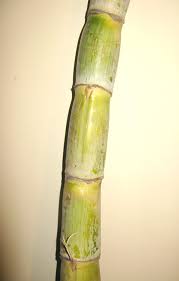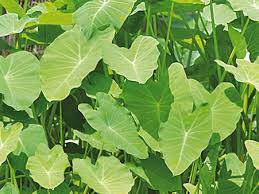Sugarcane Stalks: Economic Importance, Uses and By-Products
Sugarcane stalks, scientifically known as Saccharum officinarum, are tall, thick, and fibrous stems that belong to the Poaceae family. Sugarcane is a perennial grass predominantly cultivated for its high sugar content, which is extracted and used for various purposes, primarily as a sweetener and in the production of ethanol.
Sugarcane stalks can grow to impressive heights, often reaching up to 10-20 feet (3-6 meters) or even more, depending on the variety and growing conditions. The stalks are cylindrical and consist of multiple segments or nodes, which are interconnected by joints. The color of sugarcane stalks can vary, but they are generally green with a tinge of purple at the base of the stem. As the stalks mature, the color may change to a more yellowish hue.
The outer surface of sugarcane stalks is covered in a tough and fibrous layer, which provides structural support to the plant. This layer is often removed before consumption or processing. Sugarcane stalks are divided into segments or internodes, which are the distinct sections between the joints. These internodes are hollow and contain the sugary sap, or juice, that the plant uses to transport nutrients. Each node has buds that can potentially sprout into new shoots, contributing to the plant’s ability to regenerate.
Sugarcane stalks have played a significant role in human history, serving as a valuable source of sweetness and energy for various culinary and industrial purposes.
The Economic Importance and Uses of Strawberry Sugarcane Stalks

Sugarcane stalks have several economic importance and uses across various industries.
Here are some of the key ones:
1. Sugar Production: The primary economic importance of sugarcane stalks is in the production of sugar. Sugarcane contains sucrose, which is extracted from the stalks through a milling and refining process. This sugar is used as a sweetener in a wide range of food and beverage products.
2. Ethanol Production: Sugarcane stalks are a significant source of biofuel, particularly ethanol. Ethanol is produced by fermenting and distilling the sugars extracted from sugarcane. It is used as a renewable fuel additive, often mixed with gasoline, to reduce emissions and dependence on fossil fuels.
3. Bioenergy: In addition to ethanol, sugarcane stalks can be used to produce other forms of bioenergy, such as biogas and bioelectricity. These can be utilized for power generation, heating, and other energy needs.
4. Animal Feed: The fibrous residue left after sugar extraction, known as bagasse, is used as a valuable feedstock for livestock. It’s rich in fiber and nutrients, making it suitable for cattle and other animals.
5. Paper and Pulp: Bagasse can also be used in the production of paper and pulp. Its fibrous nature makes it an ideal raw material for making various paper products, such as newsprint, packaging materials, and specialty papers.
6. Construction and Building Materials: Sugarcane stalks have been explored as a potential source of sustainable building materials. Research has shown that the fibrous nature of sugarcane waste can be used to create materials like particleboard, fiberboard, and even as a reinforcement in cement-based products.
Read Also: Rattle snake: Facts, Habitats, Types, and Importance to Ecosystem
7. Handicrafts and Art: In some cultures, sugarcane stalks are creatively used in making handicrafts and art. The long, flexible stalks can be woven into baskets, mats, and various decorative items.
8. Biodegradable Products: Sugarcane-based bioplastics are gaining popularity as an environmentally friendly alternative to traditional petroleum-based plastics. These bioplastics can be used to make packaging materials, cutlery, and other disposable items.
9. Medicinal and Herbal Uses: Certain traditional medicinal practices involve using sugarcane and its by-products to treat various ailments. For example, sugarcane juice is believed to have cooling and energizing properties in some traditional medicine systems.
10. Soil Erosion Control: In some agricultural practices, sugarcane stalks and bagasse are used as mulch or ground cover to prevent soil erosion. This is especially valuable in regions prone to erosion and degradation.
11. Composting: Sugarcane waste can be composted to create nutrient-rich organic fertilizers, contributing to sustainable agriculture.
12. Textile and Clothing: Research has explored the use of sugarcane fibers as a potential alternative to traditional textile materials. The fibers from the stalks can be processed and woven into fabric for clothing and other textile products.
The Products and By-products That Can Be Derived From Sugarcane Stalks
Sugarcane stalks are a versatile agricultural resource that can be utilized to produce a variety of products and by-products.
Here is a list of some of the main products and by-products that can be derived from sugarcane stalks:
1. Sugar: The primary product derived from sugarcane is sugar. The stalks are crushed to extract sugarcane juice, which is then processed to obtain raw sugar. This raw sugar can further undergo refining processes to produce refined white sugar.
2. Molasses: During the sugar extraction process, a by-product called molasses is obtained. Molasses is a thick, dark syrup that contains residual sugars, minerals, and some vitamins. It’s often used in the production of various foods, as well as in the production of ethanol.
3. Ethanol: Sugarcane stalks can be fermented to produce ethanol, a type of biofuel. Ethanol can be used as a fuel additive to gasoline or as a standalone fuel in flex-fuel vehicles. It’s also a key ingredient in the production of alcoholic beverages.
4. Bagasse: After the sugarcane juice is extracted, the leftover fibrous material is called bagasse. Bagasse has several applications, such as:
5. Bioenergy: It can be burned to generate steam and electricity, making it an important source of renewable energy for sugarcane mills.
6. Pulp and Paper: Bagasse can be processed to produce pulp, which is used in the production of paper and board products.
Read Also: Sugarcane Flowers: Economic Importance, Uses and By-Products
7. Cellulosic Ethanol: The cellulose-rich portion of sugarcane, including bagasse, can be broken down into sugars and further fermented to produce cellulosic ethanol, another type of biofuel.
8. Animal Feed: Bagasse can be used as animal feed, particularly for ruminants like cattle. It’s rich in fiber and some nutrients, providing an additional economic value.
9. Biodegradable Products: Sugarcane-based bioplastics and biodegradable packaging materials can be produced from the fibrous residue of sugarcane, contributing to more sustainable alternatives to traditional plastics.
10. Fertilizers: The ash obtained from burning sugarcane residues, such as bagasse, can be used as a source of potassium and other minerals in fertilizers.
11. Compost and Mulch: Sugarcane residues can be composted and used as organic fertilizers or mulch in agricultural fields and gardens.
12. Cattle Bedding: Bagasse can also be used as bedding material for livestock, providing comfort and absorbing moisture.
13. Cane Wax: Sugarcane wax, also known as “carnauba wax,” can be extracted from the leaves of the sugarcane plant. It has various industrial applications, including in cosmetics, polishes, and food products.
In conclusion, these various uses and by-products demonstrate the versatility of sugarcane stalks as a valuable resource beyond just sugar production. As industries continue to seek more sustainable and eco-friendly alternatives, sugarcane waste products may play an increasingly important role in a wide range of applications.
Read Also: How to Start a Banana Farm









